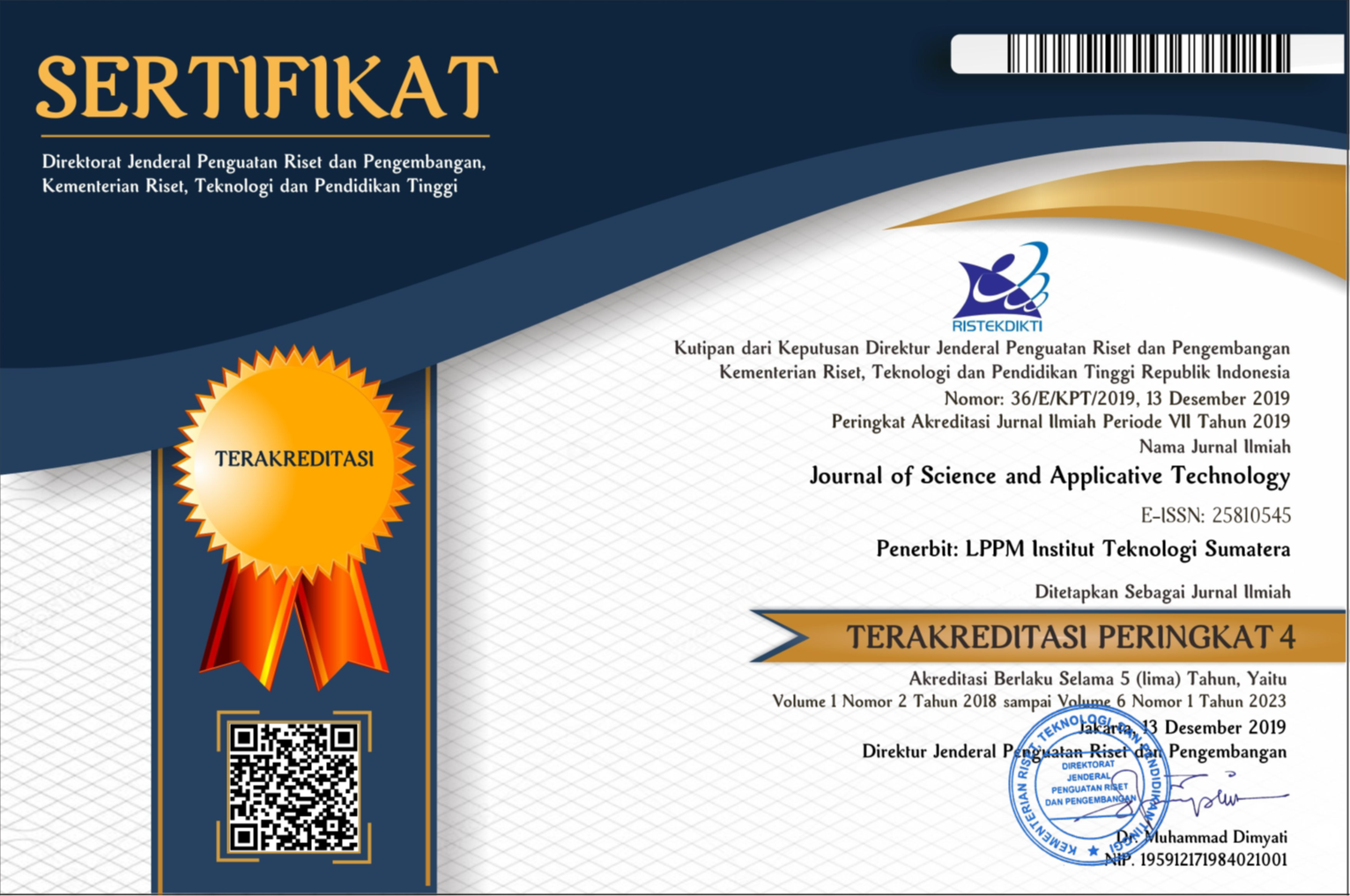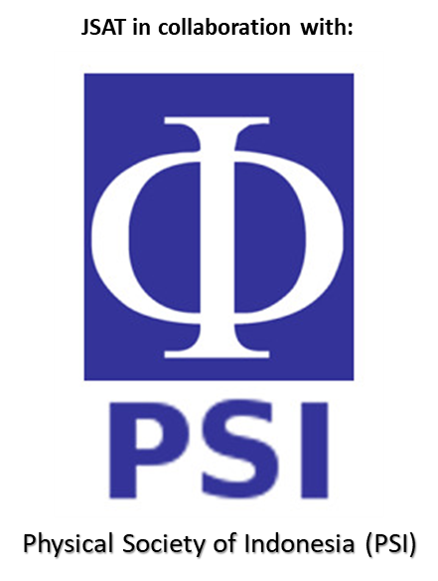Bedrock Investigation using Resistivity Method as an effort to Provide Subsurface Data at ITERA Campus
Abstract
This is a study of the application of resistivity method to provide the subsurface data for building/ foundation construction. The subsurface data which provided is resistivity data laterally and vertically and able to be used to investigate the depth and thickness of bedrock. 35 points of 1D resistivity data had been collected in ITERA campus that covered ± 150 Ha. It concentrates at northern to middle part of ITERA campus. Schlumberger configuration was employed with minimum and maximum AB/2 was 2 and 150 meter respectively and 3 varied MN. Iso-resistivity maps show high apparent resistivity value was distributed laterally and vertically. High apparent resistivity value is indicated as a representative of bedrock. The high apparent resistivity zone (resistive zone) was shown in Iso-resistivity map AB/2 2.5 and consistently up to AB/2 15 with the range of high apparent resistivity value is 80.2 up to 210.8 ohmmeter. The resistive zone was distributed laterally in Northeast to West part of study area where the depth and thickness of bedrock in west part is shallower and thicker than others.
Downloads
All the content on Journal of Science and Applicative Technology (JSAT) may be used under the terms of the Creative Commons Attribution-NonCommercial 4.0 International License.
You are free to:
- Share - copy and redistribute the material in any medium or format
- Adapt - remix, transform, and build upon the material
Under the following terms:
- Attribution - You must give appropriate credit, provide a link to the license, and indicate if changes were made. You may do so in any reasonable manner, but not in any way that suggests the licensor endorses you or your use.
- NonCommercial - You may not use the material for commercial purposes.
- No additional restrictions - You may not apply legal terms or technological measures that legally restrict others from doing anything the license permits.





















